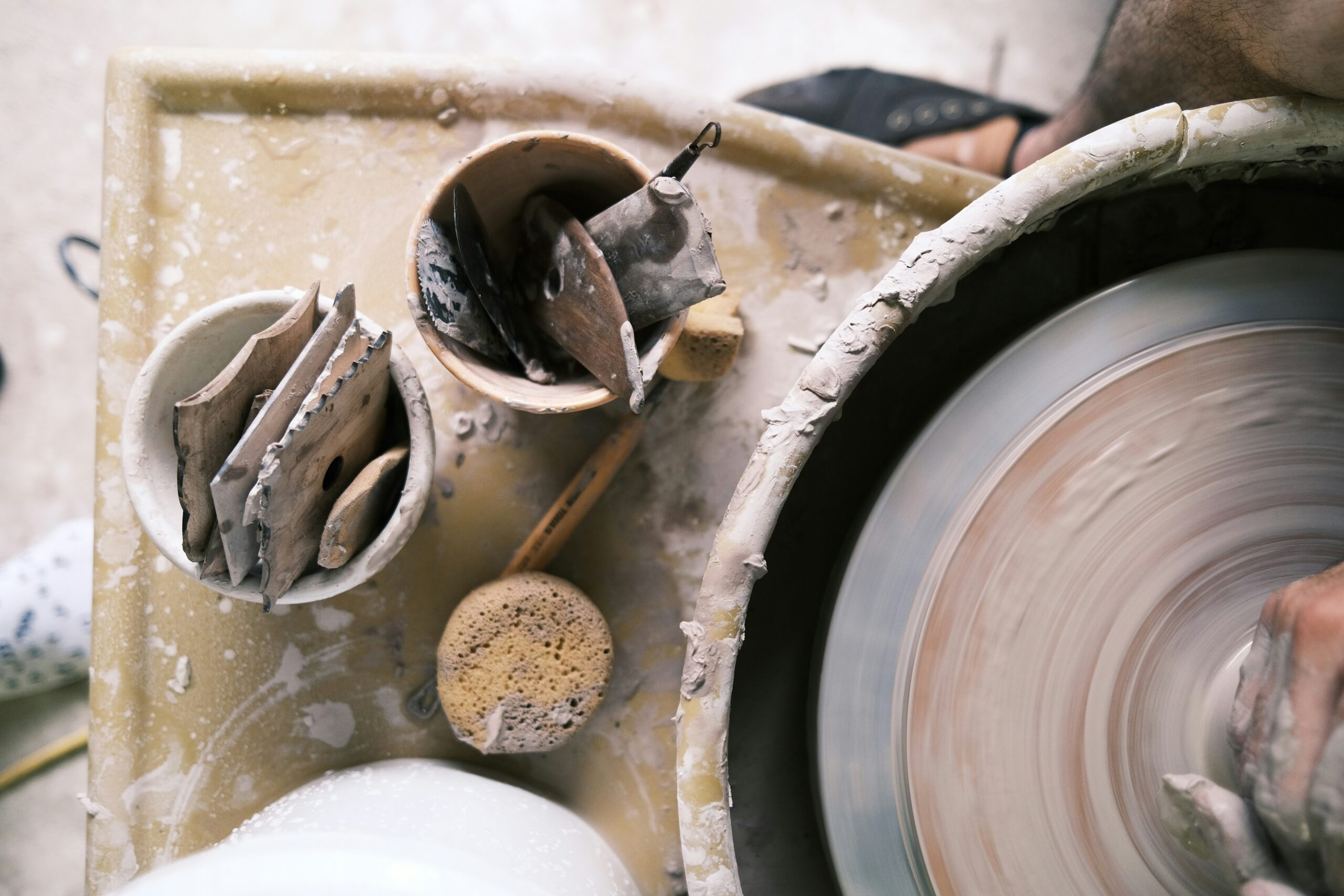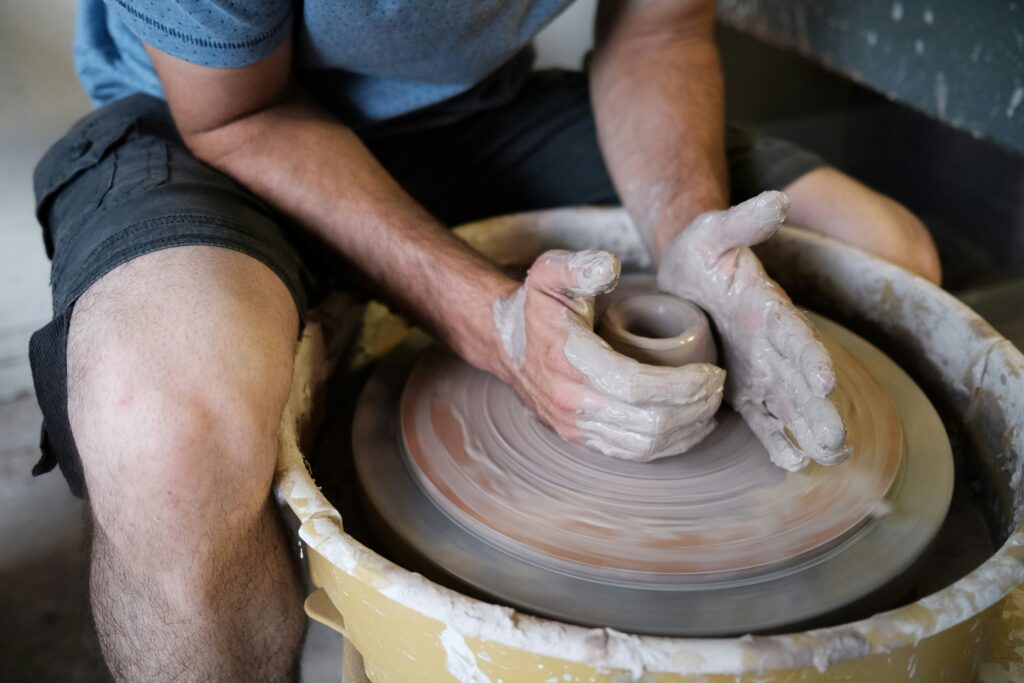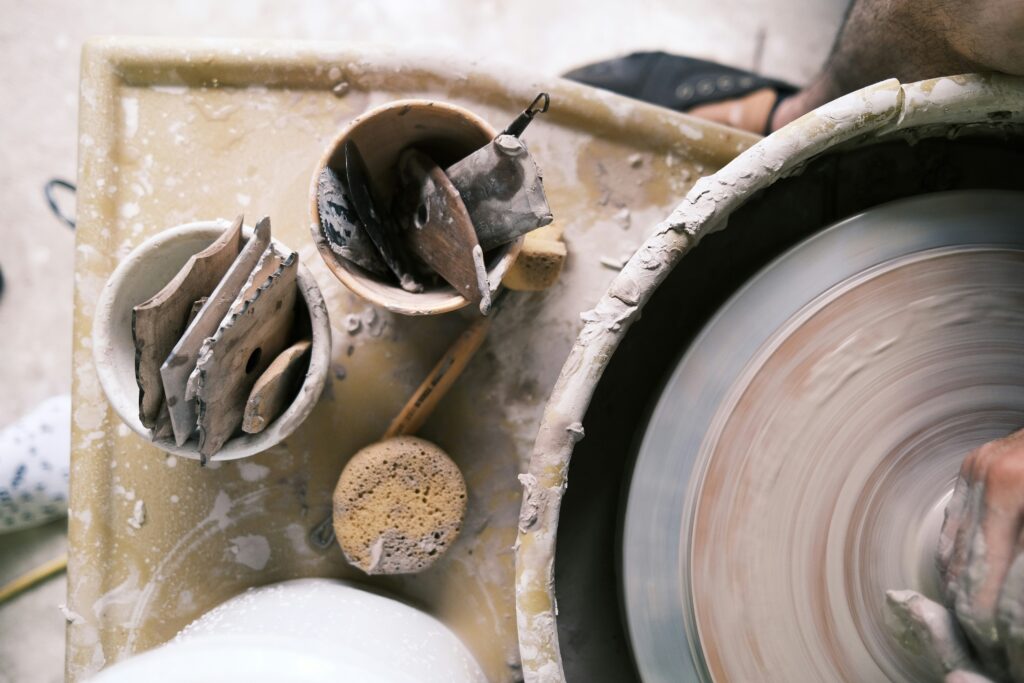
The art of creating handmade pottery: A guide for beginners
Pottery is one of those timeless crafts that combines creativity, patience, and skill. Whether you’re making your own coffee mug, a decorative vase, or a unique bowl, there’s something truly satisfying about creating something from raw clay and shaping it into a functional work of art. Pottery is a rewarding hobby for beginners, offering endless opportunities for artistic expression and the joy of working with your hands.
If you’ve ever wondered about trying pottery, this guide will help you get started, covering the essential tools, techniques, and troubleshooting tips to set you on your way to mastering the craft:
- Introduction to pottery and its artistic potential
- Essential pottery tools for beginners
- Learning basic pottery techniques
- Into the thick of it: Wheel throwing and glazing
- Troubleshooting common pottery mistakes
- Practice makes perfect – in pottery as much as in any other craft
Introduction to pottery and its artistic potential
Pottery is more than just a craft – it’s an art form that has been practised for thousands of years, and its timeless appeal continues to attract creative minds today. The beauty of pottery lies in its versatility. It allows you to create both functional and decorative items that are as unique as you are. From handcrafted mugs and plates to intricate sculptures, pottery is a medium that encourages experimentation and personal expression.

For beginners, pottery might seem a bit intimidating at first. After all, working with clay can be messy, and the process requires patience. But the rewards are immense. There’s a sense of magic when you take a lump of clay, shape it with your hands, and transform it into something beautiful and useful. The tactile nature of working with clay is both therapeutic and meditative, making it a perfect way to unwind, connect with your creativity, and make something that has practical value.
Essential pottery tools for beginners
Before you start creating your pottery masterpieces, you’ll need a few basic tools. Don’t worry – you don’t need an entire studio to begin your pottery journey.
Here’s a rundown of the essential tools that will get you started – and your shopping list:
- Clay
- Pottery wheel
- Shaping tools
- Sponges and water
- Different glazes
Clay: This is the fundamental material you’ll need to work with. Pottery clay comes in a variety of types, but as a beginner, you’ll likely want to start with stoneware or earthenware clay. These types are easy to handle and versatile for making both functional and decorative items. Always choose clay that is appropriate for the type of project you’re working on.
Pottery Wheel: If you want to create symmetrical pieces like bowls, mugs, or vases, a pottery wheel is a must. A wheel allows you to shape the clay while it spins, giving you control over its form. As a beginner, you don’t need to invest in an expensive wheel right away; many pottery studios offer beginner classes where you can learn on their equipment.
Shaping Tools: While a pottery wheel is great for certain projects, many beginners start with hand-building techniques. To shape your clay, you’ll need some basic tools like a rolling pin, a rib (a flat tool for smoothing), and a needle tool (for cutting and detailing). These tools will help you create different textures, smooth edges, and refine the shape of your piece.
Sponges and Water: When working with clay, you’ll often need water to keep it pliable and workable. Sponges are great for adding moisture and smoothing surfaces, while water helps prevent cracking during the drying and firing process.
Glaze: Once your pottery piece is fired, you can apply glaze to give it colour, texture, and shine. Glaze comes in various finishes, including glossy, matte, and satin. Experimenting with different glazes is part of the fun, as each glaze can give your piece a unique look.

Learning basic pottery techniques
Now that you have your tools ready, it’s time to learn some basic pottery techniques. Pottery can be broken down into three main categories: hand-building, wheel throwing, and glazing. Here’s a quick guide to get you started:
Hand-Building: This is the most basic and intuitive pottery technique. It involves using your hands to shape the clay into objects. Common hand-building methods include pinch pots, coil building, and slab construction.
Pinch Pots: Start with a small ball of clay and pinch it between your fingers to form a bowl shape. This is a great starting point to get a feel for the clay and how it behaves.
Coil Building: Roll out long, snake-like coils of clay, then stack them on top of each other, smoothing the seams as you go. This technique is great for making large pieces like vases and pots.
Slab Construction: Roll out thin sheets of clay and cut them into shapes to form boxes, plates, or other geometric objects. You can join the pieces together using scoring (scratching the clay) and slip (wet clay that acts as glue).
Into the thick of it: Wheel throwing and glazing
Wheel Throwing: Once you’re comfortable with hand-building, you can experiment with wheel throwing. This technique involves centering your clay on a spinning wheel and shaping it with your hands and tools. It’s an exciting technique that takes practice, but with some patience, you’ll be able to create beautifully symmetrical pieces like bowls and mugs. Don’t worry if your first few attempts are lopsided – wheel throwing can be tricky, but it’s a skill that improves with time.
💡Remember the pottery scene from "Ghost" (1990)? Because we sure do!
Glazing: Once your pottery has been bisque fired (the first firing), it’s time to add glaze. Glaze not only adds colour but also makes the piece waterproof and gives it a beautiful finish. You can apply glaze by dipping your piece into the glaze, brushing it on, or spraying it for a more textured look. Don’t forget to apply glaze to the inside of your pieces, especially if you plan on using them for food or drink.
Troubleshooting common pottery mistakes
As a beginner, you’ll inevitably make a few mistakes along the way – and that’s completely normal! Pottery is a process of trial and error, and every mistake is an opportunity to learn. Here are a few common issues beginners face and how to fix them:
- Cracking clay: Clay can crack if it dries too quickly or if there’s too much moisture in certain areas. To avoid this, make sure to keep your clay evenly moist while working. If you notice cracks forming, smooth them out with a damp sponge, and be sure to let your pieces dry slowly and evenly.
- Uneven glazing: Glazing can be tricky, and it’s easy to end up with streaky or uneven coverage. To prevent this, apply thin coats of glaze and let each layer dry before applying the next. Experiment with different glazing techniques to achieve a smooth, even finish.
- Misfiring: Sometimes, pottery can warp or crack during the firing process. This is often due to uneven thickness in the clay or air bubbles trapped inside the piece. To avoid this, make sure your pieces are the same thickness throughout, and always allow your clay to dry fully before firing.
Practice makes perfect – in pottery as much as in any other craft
Pottery is an incredibly rewarding craft that requires patience, practice, and a willingness to experiment. Don’t worry if your first few attempts aren’t perfect – even the most experienced potters have their fair share of failed pieces.
Let’s look at what we’ve learned so far:
- Pottery takes creativity, patience and skill
- Get your equipment ready: Buy some clay, a pottery wheel, shaping tools, sponges and some water
- Look into kiln options in your area – very often craft stores and other artists offer to co-burn your finished pieces
- Explore the different techniques and find what suits your pieces best
- Experiment with different glazes and find your mixture
- And as always: Don’t be discouraged if your first pieces are a little rough around the edges – it’s okay!
💡If you’re looking into kilns for your own at-home workshop, make sure you have proper ventilation and moisture management as well as the correct flooring to ensure safe firings at home
The key is to keep practicing and enjoying the process of creation. Whether you’re hand-building, wheel throwing, or glazing, every step you take brings you closer to mastering the craft.
So, gather your materials, try out some simple techniques, and start making your own pottery creations today. With time and dedication, you’ll be amazed at what you can create. Happy pottery making!


